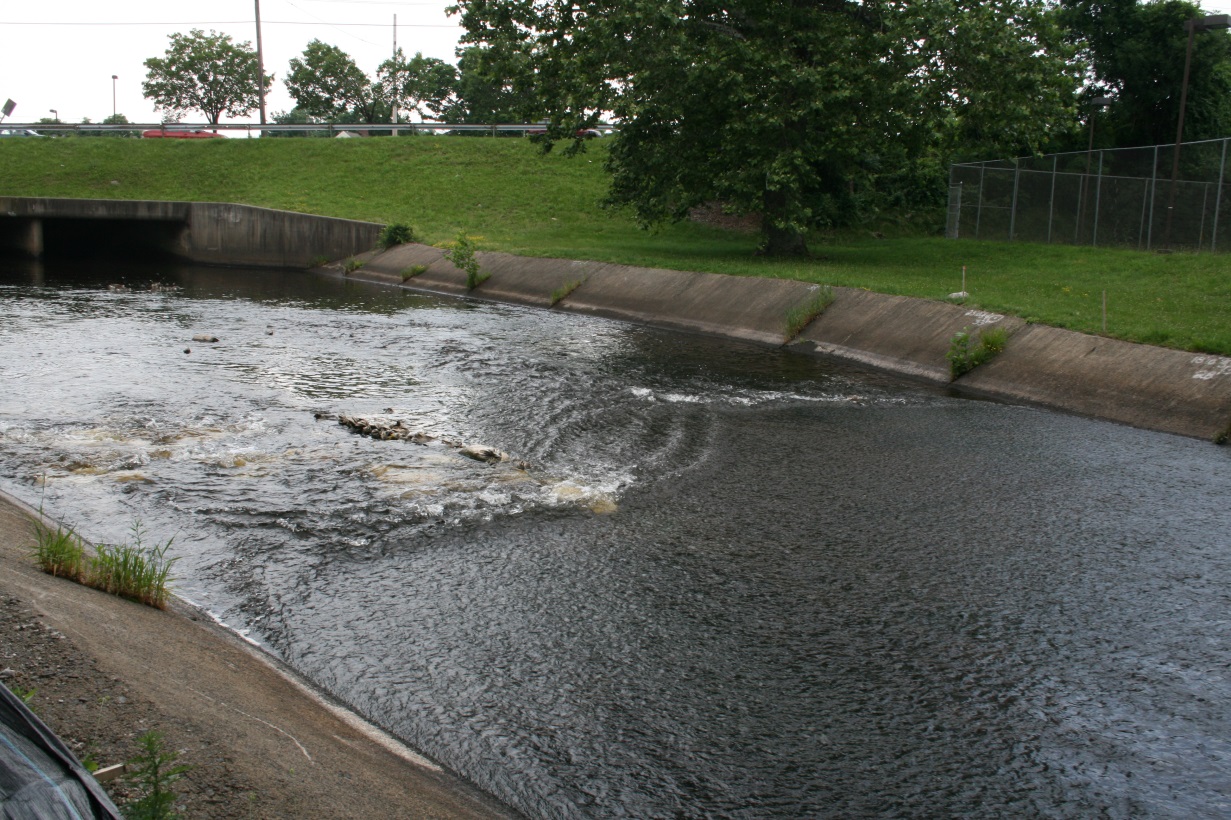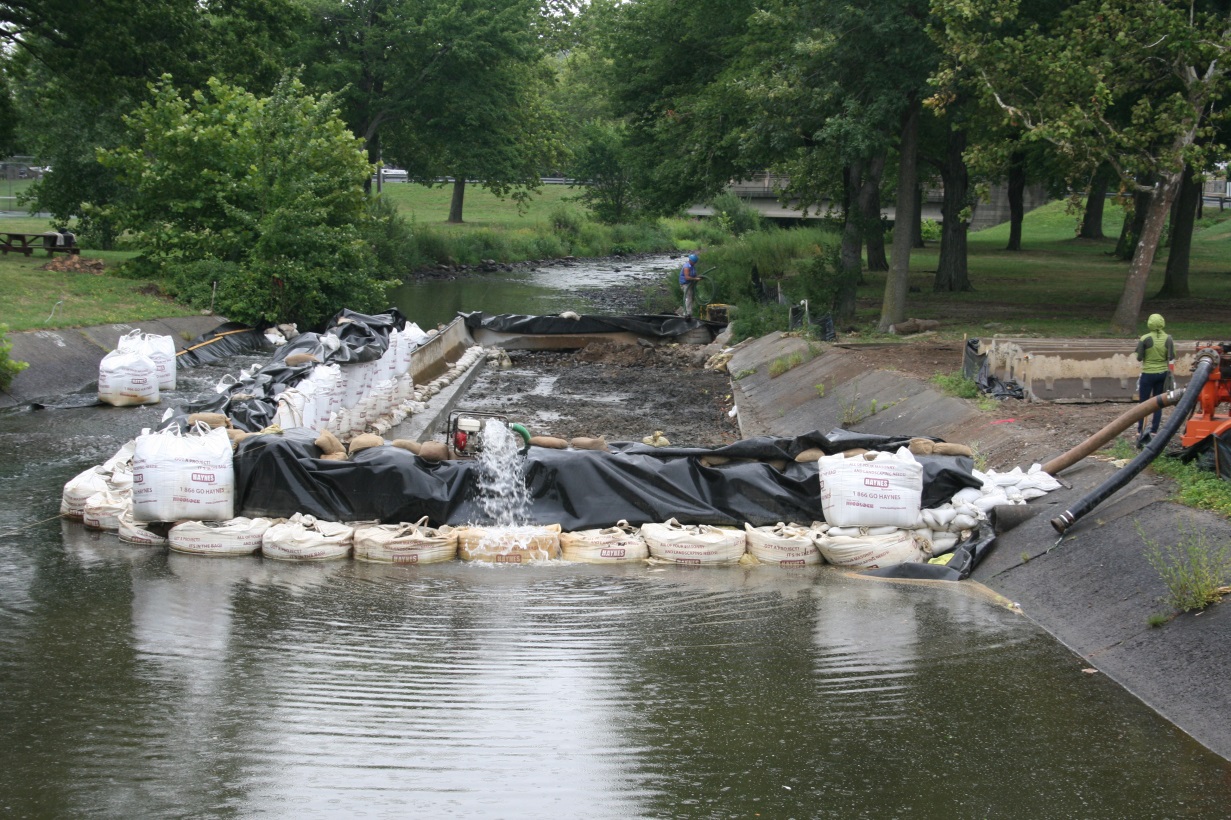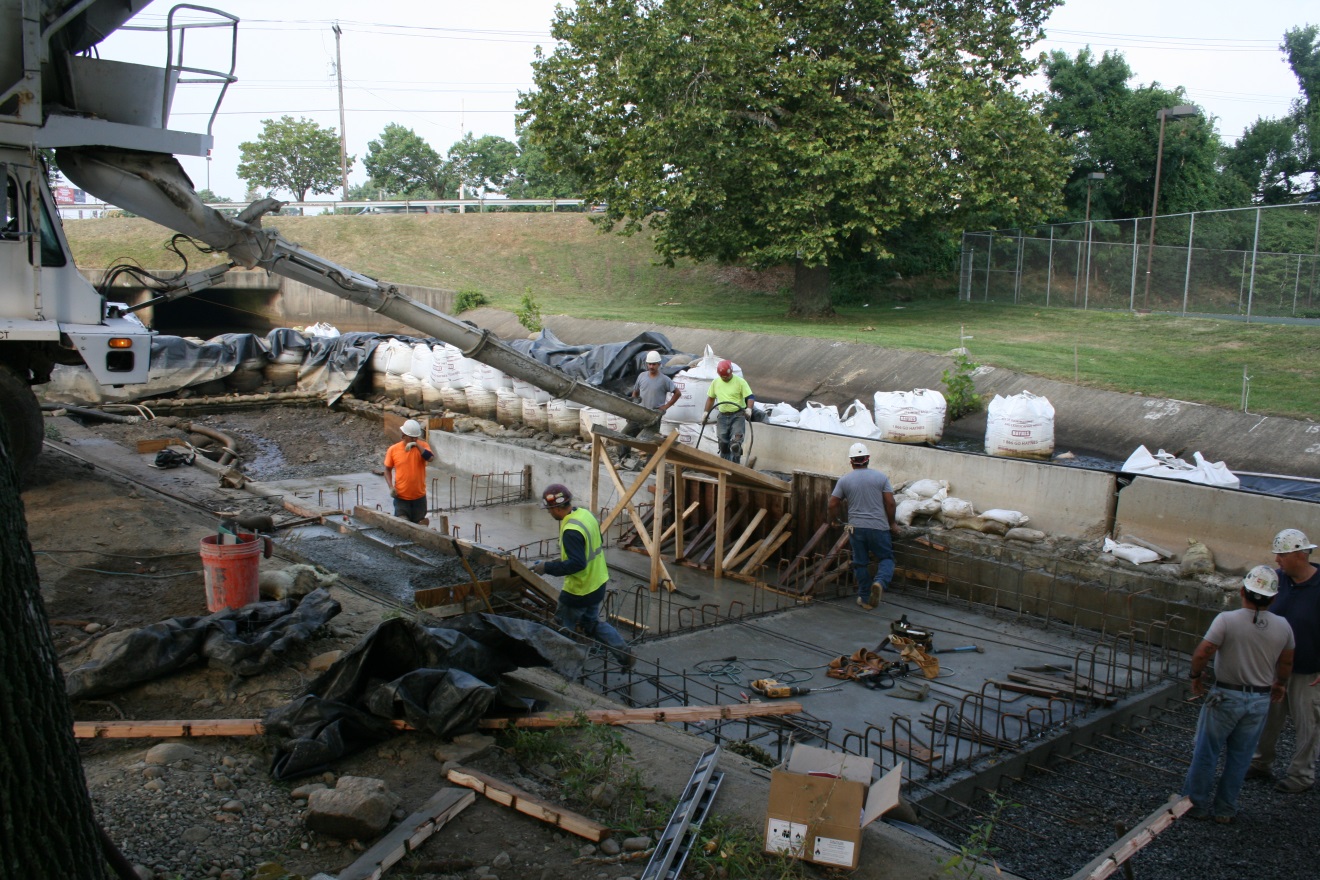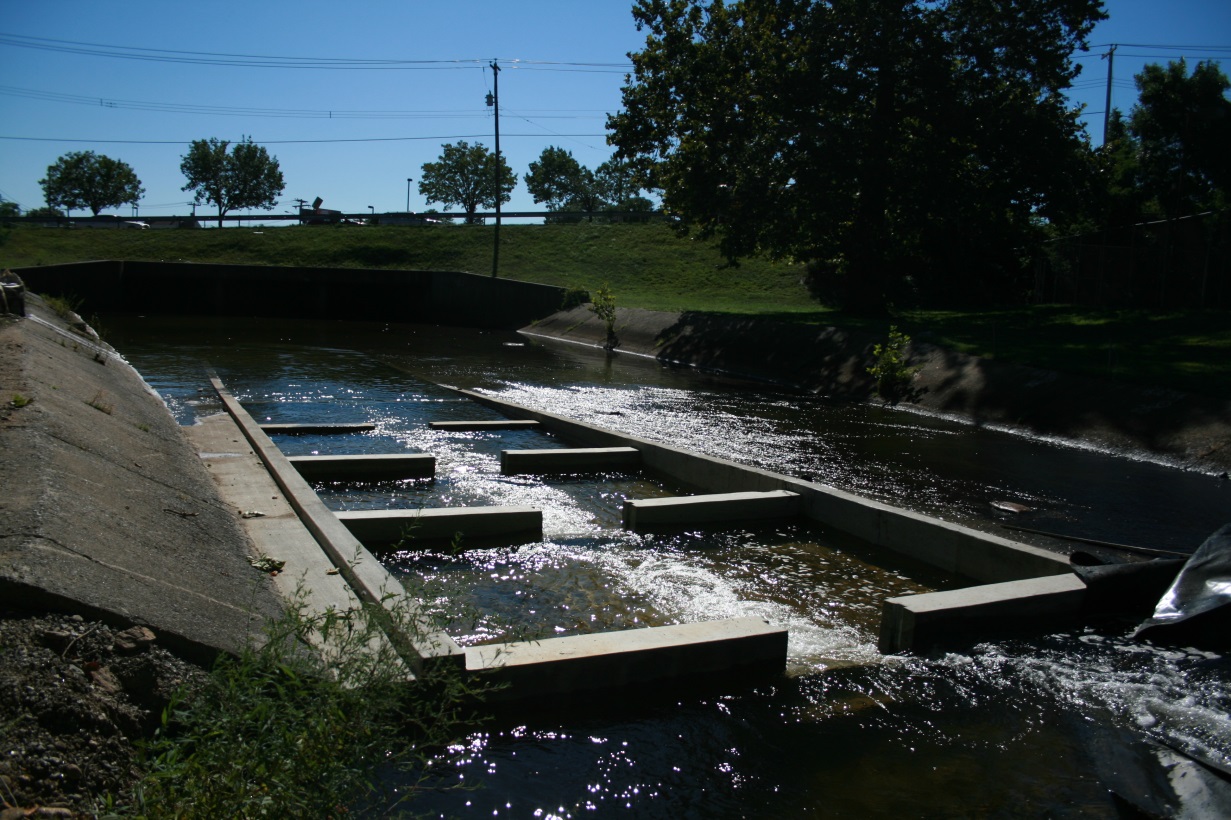One of the biggest problems facing fish in the Long Island Sound region is Connecticut’s abundance of dams and other barriers that make it difficult to migrate upstream and spawn. Some of our most important work is removing these barriers.
Last month, Save the Sound and our project partners completed construction of a pool and weir fishway designed to mitigate the effects of a concrete apron on the Pequonnock River in Bridgeport, CT. This apron, installed by the Department of Transportation in the 1950s, drastically altered the river channel and greatly inhibited the migration of diadromous fish, those fish that utilize both salt and freshwater environments during their life cycle.
Restoring fish passage is particularly important to the upstream migration of the blueback herring and alewife, collectively known as “river herring.” Populations of river herring have been declining in recent years, prompting their listing as Endangered Species Act candidate species, and an emergency commercial fishery closure by the Connecticut Department of Energy and Environmental Protection (CT DEEP). These fish are a crucial part of the Long Island Sound food web, providing sustenance to larger fish species and birds.
River herring are anadromous, meaning that they spend their lives in saltwater but return to the freshwater to spawn. Since the apron has been in place, the migration of river herring has been difficult and dangerous. When river levels were high, the force of the water was too strong for fish to navigate against, and when flows were low, the shallow water forced the fish to flop upstream on their sides, exposing them to increased predation by birds and physical stress.

Though efforts to reverse the ecological damage done by the construction of the concrete apron began in October of 2012, construction was complicated by Hurricane Sandy and very high flows in the Pequonnock River. Save the Sound and CT DEEP halted the work for the spring 2013 fish run and used that time to modify and refine the project timeline and design.

After the spring fish run, the project was restarted in July of 2013. Terry Contracting installed a new cofferdam, successfully dewatered the site, removed the old concrete slab and formed and poured four concrete pools and five weirs. Save the Sound’s Gwen Macdonald and John Champion and CT DEEP Inland Fisheries Division’s Steve Gephard joined Terry Contracting to place a U-shaped rock weir just upstream of the new pool and weir fishway to ensure a gentle transition from the constructed, concrete fishway to natural riverbed.

When the project was completed and the temporary cofferdam removed, the series of pools and weirs quickly filled with water, creating ideal conditions for the successful upstream travel of river herring.
After completing in-river work, we installed a video camera on the fish ladder at the upstream Bunnell’s Pond Dam. The camera is solar powered and will stream live on our website during the Spring 2014 fish run; it will also be part of a new display at Beardsley Zoo in Bridgeport so visitors can learn more about the native species that populate our rivers.
If you’d like to see this project up close, you’re in luck—we’ll be recruiting volunteers for an April 2014 streamside planting of the river bank along the Pequonnock River at Glenwood Park. Keep an eye on our calendar for an event listing, or email Annie Paltauf (apaltauf@savethesound.org) for more information.

The Pequonnock River Apron Modification Project is an ecological success story and a shining example of partnerships undertaken for an important cause and yielding tangible results. The removal of barriers like this one is vital to the recovery of river herring along Connecticut’s coasts. With the help of our partners and supporters, we’ll continue working to restore Connecticut’s rivers and improve the health of the Long Island Sound ecosystem!


7 thoughts on “Save the Sound Restores Fish Passage on the Pequonnock River”
Comments are closed.